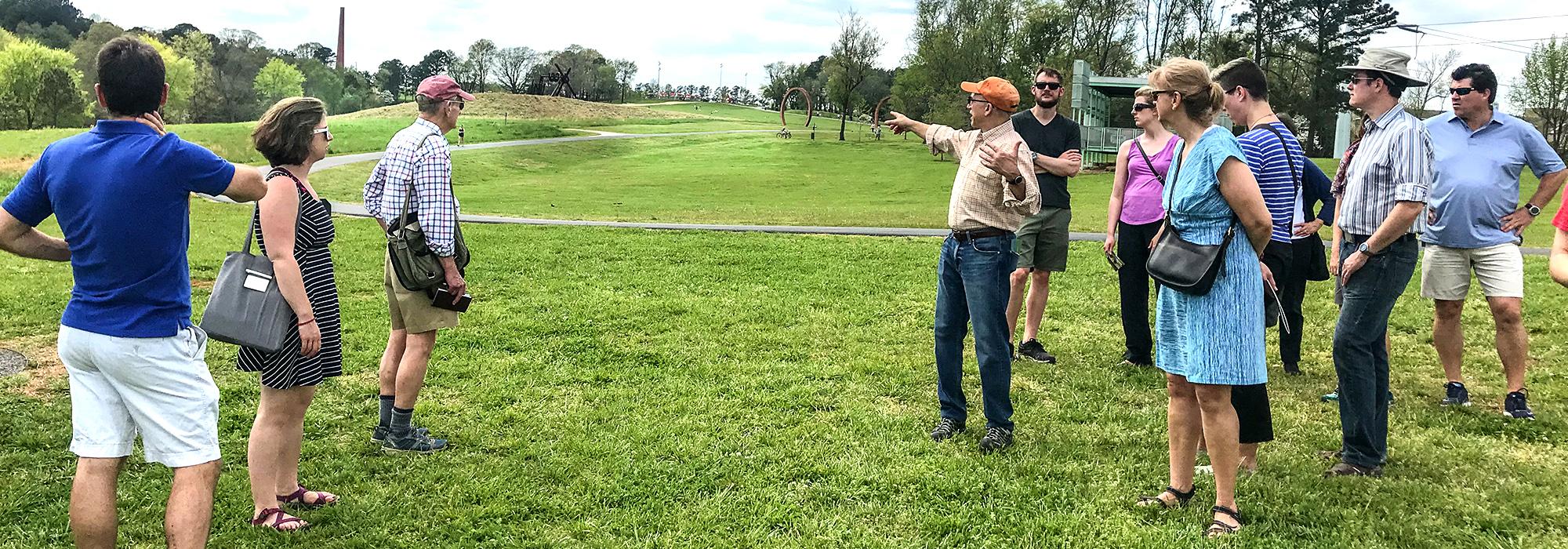Four Days of "Leading with Landscape" in the Research Triangle
"Leading with Landscapes is phenomenal. I look forward to more."
Accolades for Leading with Landscape IV: Transforming North Carolina’s Research Triangle, such as the one above, have been pouring in since the conference concluded on April 13, 2018, at North Carolina State University’s (NC State) Hunt Library. The daylong event attended by more than 300 people was the centerpiece of four days of activities that focused on the distinct landscape legacies of Raleigh, Durham, and Chapel Hill and included a What’s Out There Weekend of free, expert-led tours as well as the launch of a new online guide for the area.
One attendee praised the conference’s “great organization and planning.” In fact, the conference and all of the events resulted from a team effort; the entire undertaking was made possible with support from Premier Sponsors Dorothea Dix Park Conservancy and Sasaki, and from Event Partners the City of Raleigh, North Carolina Museum of Art, and North Carolina State University's College of Design. Lead Sponsors were ABC Stone, Bartlett Tree Experts, Civitas, Hudson Capital Properties, JDavis Architects, Landscape Forms, and Victor Stanley--their support was much appreciated, as was backing from numerous other sponsors, supporters, and members of the area’s design and landscape-architecture community. The North Carolina chapter of the American Society of Landscape Architects (ASLA) and American Institute of Architects (AIA) Triangle Section were the Partners in Education, and the ASLA is the Annual Sponsor.
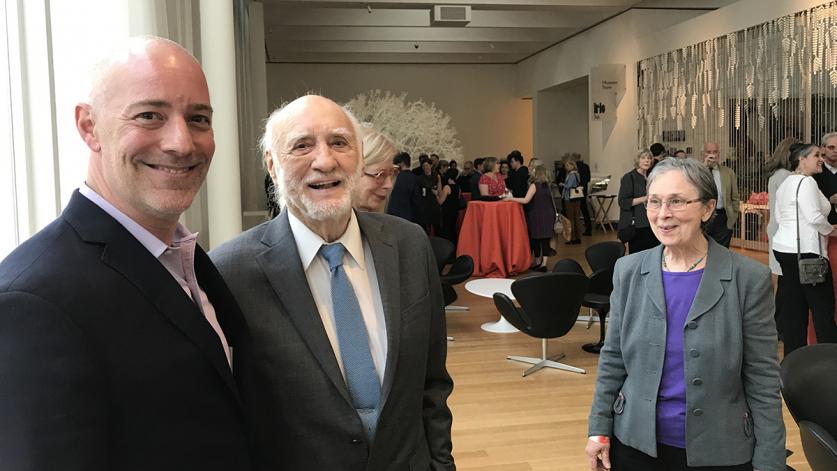
The North Carolina Museum of Art hosted a pre-conference reception that drew a crowd of more than 200, including 91-year-old landscape architect Lewis Clarke, whose contributions to the area’s design legacy were discussed during the conference. Reception attendees savored cocktails and hors d'oeuvres and took the opportunity to stroll through the museum’s contemporary art collection. Museum director Lawrence Wheeler offered welcoming remarks followed by an introduction by Daniel P. Gottlieb, the museum’s director of planning, design & museum park. The distinguished Argentine-Chilean-American novelist, playwright, essayist, academic, and human-rights activist Ariel Dorfman planned to address the group. An unexpected commitment prevented him from doing so, but he did write a moving statement, read by TCLF’s Charles Birnbaum, in which he cited the example of Nelson Mandela and urged the group to “offer a heritage of hope and beauty to future generations.” [Read the entire statement here.]
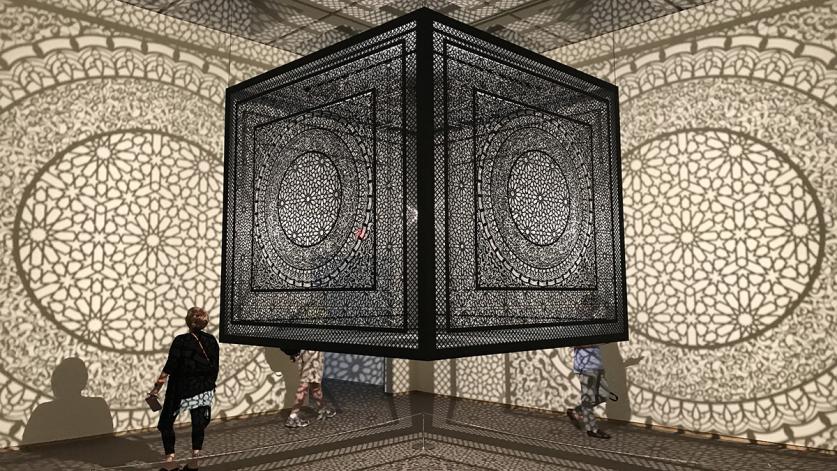
The conference, a video of which will be posted in the near future, featured insightful and welcoming opening remarks by Raleigh Mayor Nancy McFarlane. Birnbaum provided a comprehensive overview of the region’s design legacy, followed by trenchant and stirring presentations by Chuck Flink, the president of Greenways Incorporated, who spoke about the area’s remarkable natural heritage, and Kofi Boone, associate professor of Landscape Architecture at the NC State College of Design, who addressed complex cultural themes facing the Triangle region.
Mark Hough, Duke University’s landscape architect, led the first of the day’s three panels, with insightful remarks about the role of universities in shaping the area’s design legacy. Panelists Adriaan Geuze, founding partner and design director of West 8 Urban Design & Landscape Architecture, and Gary Hilderbrand, founding principal and partner of Reed Hilderbrand, LLC, each presented their ongoing work at Duke University. Geuze addressed the challenges of uniting the Nasher Museum of Art, which he likened to a Crusader’s castle on a hill, with its surroundings. Daniel P. Gottlieb, director of planning, design & museum park at the North Carolina Museum of Art, and Mark W. Johnson, founding principal of Civitas (introducing themselves as the landscape architecture equivalent of Danny DeVito and Arnold Schwarzenegger in Twins) offered an entertaining history of the museum grounds, which had its origins as a prison.
The first of the two afternoon panels, titled “The Research Triangle’s Emerging Public Realm and the Story of The New South,” was introduced by Stephen C. Bentley, assistant director of the City of Raleigh’s Parks, Recreation and Cultural Resources Department, who skillfully wove together a discussion of the unique challenges of balancing equitable prosperity with the stewardship of irreplaceable natural and cultural landscapes. Gina Ford, principal of Agency Landscape + Planning, provided a cogent deep-dive into Moore Square, one of Raleigh’s three surviving squares from the city’s Colonial-era plan. Adrienne Heflich, an associate with Michael Van Valkenburgh Associates, and Kate Pearce, senior planner for Dorothea Dix Park, offered glimpses of what the future holds for the 308-acre park.
Another topical discussion revolved around the role, function, and fate of Civil War monuments, ably addressed by W. Fitzhugh Brundage, the William B. Umstead Professor of History and chair of the Department of History at the University of North Carolina. After the conference concluded, Brundage noted a certain epiphany, "...that the 'revision' of Moore Square and [Dorothea] Dix Park are going to be the memorials and opportunities for historical memory that will define Raleigh and the Triangle moving forward. They are the spaces that the legislature can't prevent from imagining a pluralist present and future.”
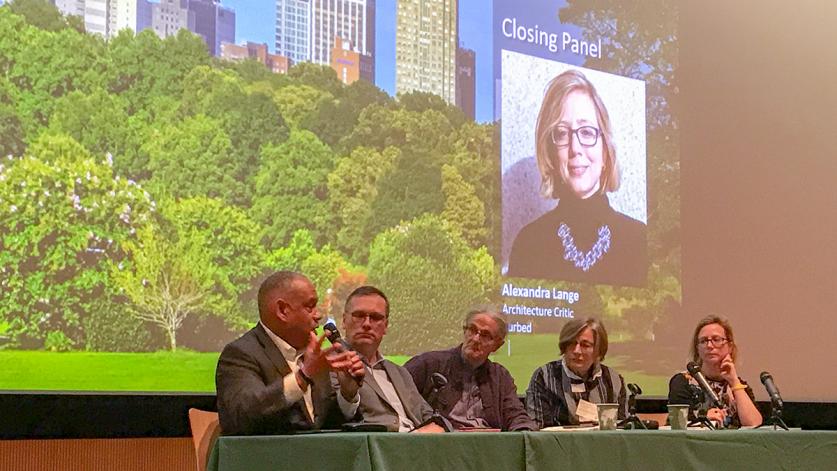
Members of the closing panel acted as respondents to the day’s proceedings and offered observations that ranged from prescriptive to sentimental, wistful, and even declarative. Andrew A. Fox, associate professor and University Faculty Scholar at the NC State College of Design, opened the discussion with his own experiences as a transplant to the area. Walter R. Havener, founding principal and director of design at Surface 678 spoke from the perspective of a more than three-decades-long practitioner in the region. Randolph Hester, director of the Center for Ecological Democracy and a recently returned Raleigh native who spent much of his career at the University of California, Berkeley, extolled the virtues of the Triangle’s cities. He noted that Durham has gone from being the cigarette capital to the medical capital, and was animated in expressing the need to maintain the region’s modesty. Linda Jewell, partner at Freeman and Jewell Landscape Architecture, and Alexandra Lange, architecture critic for Curbed, each offered very personal and touching reminiscences about growing up in the region. Mitchell J. Silver, the commissioner of the New York City Department of Parks and Recreation, energized the audience with his observations about the necessity for both hindsight and foresight in managing growth. One could almost hear a chorus of “amens” when Silver concluded: “Quality design isn't just appearance, it is also function.”
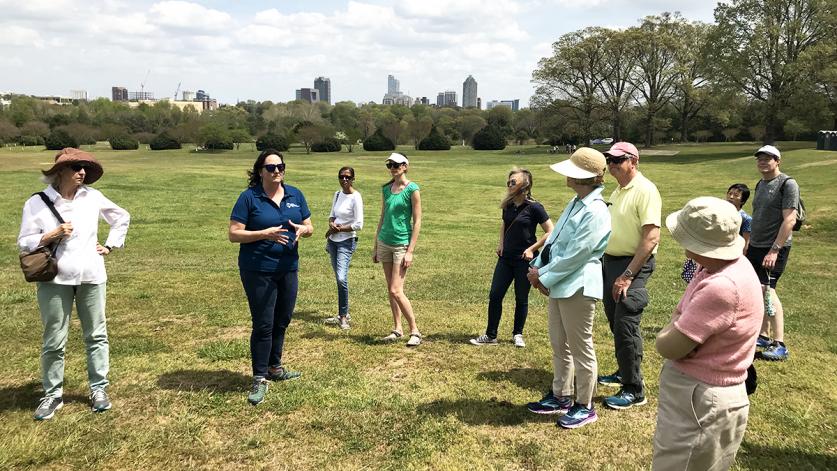
The conference was followed by a weekend of tours throughout Raleigh, Durham, and Chapel Hill. Led by expert guides, many of whom had presented at the conference, the tours offered firsthand engagement with, and further insight into, the cultural landscapes referenced throughout the previous day’s proceedings. Saturday morning began with several concurrent booked-to-capacity tours at Duke University, led by Mark Hough, Gary Hilderbrand, Linda Jewell, and Jan Little (director of education and public programs at Duke Gardens). Sunshine-filled spring weather persisted throughout the day, while participants toured more than twenty diverse sites, including the campuses of the University of North Carolina at Chapel Hill and NC State; the greenways, parks, squares, and prominent streets of Downtown Raleigh; and Historic Yates Mill County Park, of which TCLF Board Member Emma Skalka said “…the intricate functions and level of innovation were mesmerizing …one could practically smell the energy and history in there.”
Other highlights included a bike tour of Durham’s American Tobacco Trail led by Chuck Flink, an in-depth history at Oakwood Cemetery in Raleigh with Robin Simonton (the cemetery’s executive director), and several tours of the Ann and Jim Goodnight Museum Park of the North Carolina Museum of Art with Dan Gottlieb, Mark Johnson, and Scott Jordan (a principal at Civitas). As a special treat, Gottlieb led a charrette about a design problem his team has been facing in the landscape.
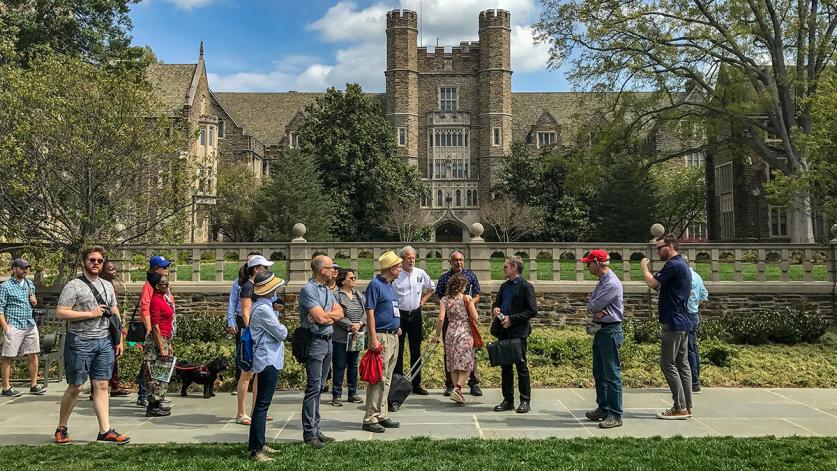
Sunday’s schedule provided a second chance for tour-goers to visit some of the places they may have missed the day before. One of the final tours of the weekend was a full three-mile circuit around Dorothea Dix Park, in which Kate Pearce and Caroline Lindquist (planning technician for the Park) delved into the intriguing history—plantations, mental health facilities—and future vision for the park. Currently in the master planning phase with Michael Van Valkenburgh Associates, Dorothea Dix Park, which opened to the public in 2015, is poised to further Raleigh’s downtown transformation, and the tour was a capstone to the four days of events.
Special thanks are due to Chuck Flink and Zak Pierce (principal with CLH design, p.a.), who led the local tour-planning committee, and to the dozens of expert guides and volunteers who dedicated their weekend to sharing the Triangle Region’s landscape legacy with more than 800 eager participants.



